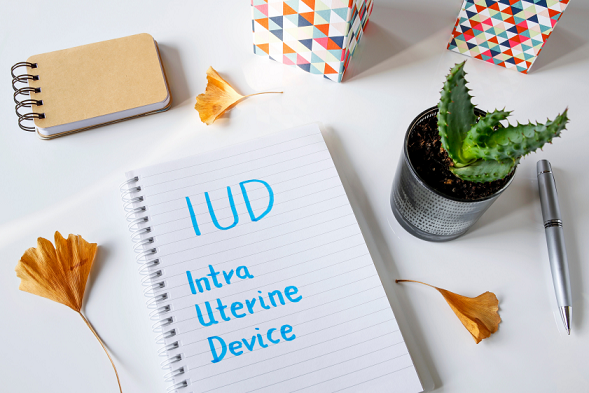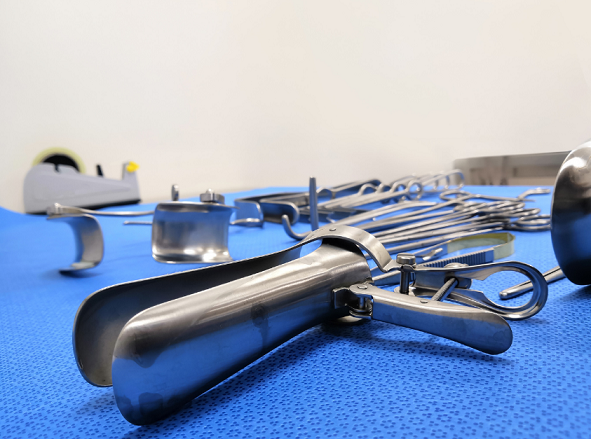If you have questions concerning family planning types and birth control options for women you should choose from? This article will highlight the pros and cons of each method and some other birth control options for older women.
Table of Contents
Key points:
- Family planning offers one the opportunity to choose as many children as they want and to determine the spacing between each of them.
- Different family planning options are available to both men and women of reproductive age.
- If you are still not sure which of the aforementioned options are most suitable for you, kindly Consult a Doctor for professional advice on the best family planning method for you.
The days are long gone when native rings, arm bands, padlocks, and potash powder were used in the prevention of pregnancy. Family planning has greatly evolved and has been improved upon from what it used to be known for, far back in the 18th century.
According to the World Health Organisation contraception comes in a wide variety of forms, but not all of them are suitable for all situations. The best method of birth control varies based on a person’s age, sexual activity frequency, number of partners, desire to have children in the future, and family history of specific diseases.
Wikipedia defines family planning as the ability of individuals and couples to anticipate and attain their desired number of children and the spacing and timing of their births, which is achieved through the use of contraceptive methods and the treatment of involuntary infertility.
Family planning and birth control help to reduce pregnancy-related health risks for women, particularly adolescent girls. WHO reported in a review of interbirth intervals that children born within 2 years of an older sibling have a 60% increased risk of infant death, and those born within 2-3 years have a 10% increased risk, compared to those born after a 3 year or longer interval.
Barriers to family planning and birth control options
There are a number of barriers in relation to family planning and birth control options, such as a lack of options for treatment, restricted access to services, especially for young, impoverished, and single individuals, fear or experience of side effects, opposition from culture or religion, poor quality of services that are available, bias on the part of users and providers against certain treatments, and constraints to assistance access based on gender.
There has also been a rise in demand for contemporary contraceptive methods as these limitations are removed in various areas.
Family planning is a basic right of every living human and should be made available to men and women. Women under the age of 15 and above 35, those who have delivered four or more children, those who have experienced high-risk pregnancy, or those with chronic illnesses are especially in need of birth control options.
It has been established that family planning and birth control options for women provide a variety of possible non-health benefits, including increased education opportunities and empowerment for women, as well as long-term population growth and economic prosperity at the family and national levels.
Family Planning Types and Methods
Are you thinking about plans to avoid unplanned pregnancies? Have it at the back of your mind that the efficiency and mechanisms of the available functioning family planning types vary. The effectiveness of family planning is hinged on the evaluation of the number of pregnancies per 100 women using a method continuously.
In addition to providing substantial health and other benefits, WHO emphasized that there is a need to ensure that everyone is provided with access to their desired methods of contraception, which enhance various human rights, as freedom of thought, speech, and choice, the right to life and liberty, the right to work, and the right to an education.
The family planning types and methods are listed and elaborated on below:
- Natural methods
- Emergency contraception
- Hormonal methods
- Barrier methods
- Intra-uterine contraceptive devices (IUCDs)
- Surgical contraception
1. Familt Planning: Natural methods

This birth control option does not require any kind of medication, device, or surgery. It involves:
Abstinence: This method is not expensive and can be practiced only by couples with self-control. Avoiding sexual intercourse is the surest way to prevent pregnancy.
Withdrawal method: this method is also known as coitus interruptus. It is a birth control method in which the penis is removed from the vagina before sperm is ejaculated during sexual intercourse. This method is free and does not involve hormones or devices for operation. It does not guarantee 100% protection and is hence not considered safe.
Lactational Amenorrhea Method: This method of family planning requires a nursing mother to exclusively breastfeed her child with no supplements for a period of 4 hours during the day and 6 hours at night. When practiced effectively, this method prevents the return of menstrual periods for at least 6 months.
Fertility awareness-based methods: This is based on the ability of a woman to discover physiological changes associated with ovulation. This method can also be applied through the use of ovulation predictor kits. Luteinizing hormone rises 24 to 48 hours prior to ovulation, and the kit dictates that.
When these changes are observed, the woman ensures she has no sexual intercourse and thus prevents pregnancy. It is not suitable for women with irregular menstrual periods, and it restrains spontaneous sex.
2. Emergency contraception
Emergency contraception works by preventing or delaying ovulation (which is the release of the egg from the ovary), and this, in turn, prevents conception. Emergency contraception can be used immediately or up to 72 hours after an unprotected sexual encounter. Also, it can be taken if the birth control technique has failed and if there was compelled unprotected sex or sexual assault. You can check for any generic versions or brand names available in your location.
3. Hormonal birth control method

Oestrogen or progesterone (or both) are hormones that when introduced into your body either orally, by implant, or by injections, interfere with a woman’s system to prevent pregnancy.
Types of hormonal contraceptives for family planning:
Oral contraceptives: Birth control pills are taken by mouth. They work by suppressing ovulation and thickening the cervical mucus, thereby preventing sperm penetration and reducing sperm transport. They are highly effective and do not interfere with intercourse. It is effective when taken correctly.
Oral contraceptives need a prescription from a doctor. When you use this contraception, the side effects could include the absence of a menstrual period (amenorrhea), nausea, vomiting, breast tenderness, increased blood pressure, and irregular bleeding. Considering some health-related risks that emanate from birth control pills, you may want to avoid them.
Injectable contraceptives: an injectable contraceptive called Depo-Provera is a form of hormonal contraceptive that may contain estrogen and progestrone or progestin only. The injectable contraceptive is very effective and given at muscle sites of the skin by intramuscular.
Each injection is effective for up to 3 months, and overall, in a year, it is injected only 4 times. It is long-lasting, culturally acceptable, and suitable for women of all reproductive ages. It may cause bleeding between periods, and it does not protect against STDs.
Birth control patch: this form of birth control comes in patches that you can wear on your skin once a week for up to 3 weeks, skipping a week in a month. Hormones, the same as the birth control pills, are released into the body from the patch. With a birth control patch, you do not need to take pills daily.
A birth control patch has similar side effects, just like oral contraceptive pills, and you may experience skin irritation from the patch. It does not protect against STDs; you must consciously ensure you are safe by adopting, together with the patch, other forms of family planning methods like male condoms.
Contraceptive implants: a progestin-only contraceptive like a matchstick-sized rod that is inserted under a woman’s upper arm through a minor surgery. This method has long-lasting effects ranging from 1-5 years, does not require regular visits to the clinic, and allows the return of fertility immediately after implants are removed. Contraceptive implants require medical examination before insertion takes place, thereby making them an expensive form of family planning. It may cause irregular bleeding and does not have any protection against STDs. Speak to a Gynaecologist about suitable implants for you.
4. Barrier methods

Sperm are prevented from entering the womb by chemical action or mechanical obstruction in this type of method. Variations of this method include:
Chemical barrier method: This requires chemicals or spermicides placed in the vagina to kill sperm. They are placed on the vagina before sexual intercourse. Examples are spermicidal creams and jellies, foaming tablets, and vaginal suppositories.
Mechanical barrier method: classified into male and female types, they both are physical agents that destroy sperm.
Male condoms: This is a thin rubber sheath usually worn over the penis before sexual intercourse. It works by preventing pregnancy and reducing the transmission of sexually transmitted diseases and HIV. It is an inexpensive, highly effective birth control option that is widely available and accepted. The disadvantages of male condoms are the inability to reuse a condom, and it would always be effective family planning only if used correctly each time.
Female condoms: This is a soft pouch that is usually inserted into the vagina. This barrier method prevents the sperm from meeting the egg and stops the direct contact between the penis and vagina, thereby preventing pregnancy and the spread of sexually transmitted diseases. You can insert a female condom in your vagina 8 hours before sex.
The female condom is not as effective as the male condom, and it can be noisy. There is about a 22% probability of getting pregnant with a female condom. Also, avoid using it with male condoms to limit any kind of breakage. Female condoms can be optimized for breastfeeding.
Phexxi: is a gel-like non-hormonal birth control that one can choose in place of spermicide. Naturally, a woman’s vagina is acidic; however, the semen that carries the sperm reduces the acidity, making it alkaline, which is a more favourable pH for the sperm to thrive. Basically, Phexxi keeps the vaginal pH levels low, i.e., more acidic, thereby lowering the effectiveness of sperm.
Phexxi is easy to use as it is packaged in 12 prefilled applicators. It is more like the use of a condom. The disadvantage is its inability to shield you from STDs.
It is safe, cheap, and easy to use. It does not interfere with one’s menstrual cycle. Their disadvantage lie in the fact that it could cause irritation, interfere with intercourse, and it is difficult to hide from a partner.
Diaphragm: It is a temporary artificial contraceptive inserted into the vagina before intercourse. A one-year review of 100 women who used this rubber dome over their vagina before sex showed that 16 of those women got pregnant. It is safe for most women except those who have bladder infections. It might be expensive for some and require special care and storage.
Also, for a diaphragm to be fitted, it requires the professional skill of a doctor. Avoid the use of diaphragms when you are in your period; this is to limit the risk of toxic shock syndrome. This particular form of birth control does not protect against STDs.
Birth control sponges: are an effective ways to prevent pregnancy. It is a foam-like substance that contains spermicide that you can place in the cervix for up to 24 hours before intercourse. This method does not require you to consult a doctor for a prescription or its insertion, though it can be challenging to put into your cervix by yourself. Also, it cannot be used during your period.
Cervical caps: They are similar to diaphragms and are also effective in preventing pregnancy and the spread of sexually transmitted infections. The cervical cap should be used together with spermicide. The cervical cap is inexpensive and can sit in your cervix for 48 hours. It does not protect against STDs and requires to be inserted over your cervix by a doctor.
5. Intra-uterine contraceptive devices (IUDs)

These are small objects made from plastic materials and placed in the uterine cavity. It could be non-hormonal copper or progesterone. They work by forming a barrier to implantation and making the endometrial lining hostile to sperm. Non-hormonal copper IUDs can be placed in your uterus for up to 10 years, but that does not apply to hormonal IUDs. Hormonal IUDs should be changed after 3-5 years.
Both non-hormonal copper IUDs and hormonal IUDs are more effective than most contraceptives because they are low-maintenance and long-acting. Its disadvantage is that it requires screening, must be done by trained healthcare providers, needs regular check-ups, and increases the risk of ectopic pregnancy and irregular periods.
6. Surgical contraception for family planning

Voluntary surgical contraception is a permanent method of contraception that involves the removal of some parts of the male or female reproductive system. Vasectomy is carried out on men, while bilateral tubal ligation is done on females. It is a permanent surgical procedure and requires special counseling by a certified doctor to avoid regrets later.
Tubal ligation: this is done when you have decided not to get pregnant ever again. The surgery is done by having your tubes tied, which mean closing off the fallopian tubes and preventing sperm from meeting with an egg. Even though this form of family planning is almost 100% pregnancy-preventive, it still does not protect you from STDs.
Vasectomy
Among all the family planning and birth control options discussed earlier vasectomy and condoms are the only birth control option for men. Vasectomy is done on men who wish to not impregnate women. Surgically, a doctor closes the tube that conveys sperm from a testicle called the vas deferens. Permanently, the release of sperm is prevented; however, you can still orgasm and ejaculate during sex. The vasectomy procedure costs a lot less than tubal ligation, though; it is 100% effective and has the possibility of being irreversible.
Older women birth control options
Usually, the patch and combined birth control are not always advised to be administered to women who are obese, smoke, or are over 35. For this reason, ask your doctor about the best and safest alternatives. Injectable contraceptives are mostly advised for women going into menopause, as they may help alleviate perimenopause symptoms.
Frequently Asked Questions
- How can I choose a method of contraception?
When it comes to choosing a contraceptive method that works for you, there are some factors you have to put into perspective, such as your age, your health, and medical history; your average sex encounters; your plans to have children in later years; and number of sexual partners you have.
However, do not forget that some methods of contraception are linked to some health risks and adverse effects.
It is very essential that you consult a doctor to examine your state of health and determine which form of contraception is suitable for you. Consult a Doctor on kompletecare for more information.
2. Is contraception used for things other than preventing pregnancy?
Yes. Different methods of birth control can be prescribed by the doctor to alleviate or treat specific disorders or symptoms. Women who experience acne, severe menstrual cramps, and heavier menstrual bleeding can be prescribed oral contraceptives to reduce the health challenges. Oral contraception can also be used to limit the risk of colon, ovarian, and endometrial cancers, reduce breast and ovaries cyst development, ameliorate bone density, and reduce anemia.
Oral contraception can be used to treat endometriosis, fibroids, and polycystic ovarian syndrome. Severe menstrual cramps and heavy menstrual bleeding can be alleviated with a prescribed hormonal IUD from a doctor.
3. How does an implant work?
Implants are offered as part of the contraceptive choices. An example of this is the Implanon NXT, a single, flexible plastic rod smaller than a matchstick that releases a constant amount of the progestogen, etonorgestrel.
It is usually inserted under the skin of the inner, upper, non-dominant arm. The objective of implants is to prevent ovulation. Implants are the most effective contraceptive method, but no method is absolutely 100% effective. Implants have a pregnancy risk of <5 in 10,000 women in their first year and <1 in 1000 women at three years.
The duration of useofimplant birth control is 3 years. It should be replaced after three years, but it can be removed earlier if you request to plan a pregnancy or switch to a different method.
4. Who can use implant birth control?
Implants can be used by almost all women who need contraception, regardless of age or parity, including those who are breastfeeding, has cardiac disease, diabetes, hypertension, a high body mass index (BMI), human immunodeficiency virus (HIV) or acquired immunodeficiency syndrome (AIDS).
It is not well established how a birth control like an implant will interact with women with breast cancer.
5. How is an implant rod inserted?
An implant rod is inserted by a doctor, and first, by injecting local anaesthetic to numb the area, and then the rod is inserted under the skin using the pre-packed, sterile, loaded, disposable applicator.
Just know that there may be side effects with implants just like with the whole range of progestogenic contraceptives, but because hormone levels are consistently low with implants, they tend to be significantly less than with injections.
There may be a likelihood of menstrual changes during the use of the implant:
- 1 in 3 women will have normal menses.
- 1 in 4 women will have occasional light bleeds.
- 1 in 5 women will have amenorrhoea.
- 1 in 6 women will have nuisance bleeding.
Implants do not require routine follow-up visits. You will be counseled by your doctor to return when it is time to have the implant removed or at any time if you have problems or wish to stop the method, switch to another method, or plan a pregnancy.
6. Can implants move and get lost in my body?
It is highly unlikely for an implant to move from the implanted arm site into another part of your body. Implants are done with a specially designed applicator; however, in the rare cases of deep placement, the implant can be located with an X-ray.
Use a condom in addition to an implant for protection from STI and HIV.
7. What are the health risks and side effects associated with contraception?
There are health risks and side effects attached to different forms of contraception. The risks and side effects can be severe. Some forms of contraception increase the risk of high blood pressure, heart disease, and blood clots. These adverse effects may be severe in women with certain illnesses. Considering these risks and side effects, it is wise to consult a doctor regarding your overall health conditions and the right birth control options for you.
8. What should I do if I want to stop using a form of birth control?
Speak with your doctor if you are considering stopping birth control, especially if you are trying to fall pregnant. Your ovulation and menstrual cycle can return to normal in about 1-2 months once you stop taking the oral pill, and you could become pregnant during your next menstrual cycle.
A contraceptive patch or vaginal ring has a similar process with the return of your menstrual cycle; once you stop using them, the release of hormones stops as well. However, the case is not the same with Depo-Provera (an injectable contraceptive); getting your ovulation and menstrual cycle back may take up to 8-10 months for some women.
Ensure that your hormonal IUD is removed by your doctor, and you can become pregnant once it is removed. Also, for an implant rod, consult your doctor for its removal. It can be removed through a cut on the implant site in your arm. After removal, there is no delay in returning to fertility, and implants do not affect long-term fertility. 90% of women will ovulate within a month after removal.
Reference
Kalu, E. (2022). Family planning and birth control options for women.
World Health Organisation. (2023). Family planning/contraception methods.
World Health Organisation. (2023). Mechanisms of action and effectiveness of contraceptive methods.
- Medically reviewed by Dr. Solomon Akpaka








